Les Productions Ondinnok
On the Experience of Making Indigenous Theatre in Quebec, Canada / Les Productions Ondinnok: Sobre la Experiencia de Hacer Teatro Indígena en Quebec en Canadá
This week on HowlRound, we look at the city of Montreal through the lens of several artists, who navigate its theatre scene. This series not only explores the dynamics of Montreal’s English and French theatres, but also takes a look at the work being done towards gender parity, and diversity and inclusion. Les Productions Ondinnok represents the authentic and uncompromised artistic and spiritual expression of Montreal’s indigenous artists. They have managed to survive for over thirty years without needing to integrate, refusing to walk on the stages of mainstream theatres. Instead of notoriety and financial stability, Ondinnok has chosen integrity and personal growth. They have much to teach us. And Carlos Rivera is made of the same dough. —Arianna Bardesono, series curator
The following text was translated from Spanish by Georgina Escobar.
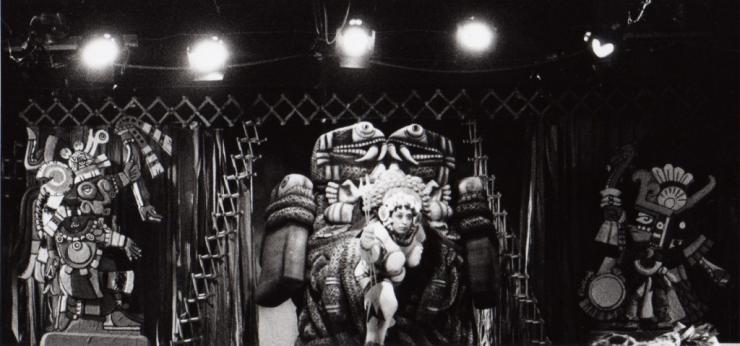
The first time I encountered Yves Sioui Durand and Catherine Juntas, founders of Les Productions Ondinnok, was during the 2015 Talking Stick Festival organized by the exemplary Canadian Indigenous artist Margo Kane, produced in the city of Vancouver in February of that year. It was there that I had the opportunity to chat with Yves and Catherine—they both surprised me when they spoke to me in perfect Spanish, and with a Latin American accent. I was beyond enchanted after learning of the work that Ondinnok has engaged in on multiple tours and journeys through Canada and Latin America, and especially learning of their connections and ties to the indigenous populace in countries like Guatemala and México.
Yves shared with me that learning about what historians call the “Conquest of México” and the way the indigenous people of Mexico were subject to Spanish barbarianism has been a lesson that has deeply impacted his life. He told me about his travels through the state of Oaxaca, his encounters with Mayan communities in the Yucatán peninsula, and how surprised the Latin American indigenous people were learning of his Canadian indigenous origin, and the colonization histories of the French and the English in the territory now known as Canada—to the indigenous populace, it’s still known as Turtle Island. It was from these encounters, investigations, and recollection of histories throughout México that Ondinnok created the show La Conquista de México (The Conquest of México).
Yves and Catherine made it a point to create an ensemble of actors and collaborators that consisted mainly of people with indigenous and Quebec origins to create the work. The language of the text was written and performed in French and the play was presented in Montreal.
I was captivated by the idea of creating theatre that deals with the history of what happened in México during those difficult times that forever scarred the lives and stories of the indigenous tribes of México. Deeply immersed in conversation with Yves, I asked him what other theatrical works had been created by his company. He answered, “We would need a lot more time to fully detail and share with you the many journeys taken by Ondinnok in order to create theatre that speaks to and about the indigenous populace, and having it be realized and performed by the same.” I agreed with him, and we both discussed the need to dig deeper into this conversation on another occasion, perhaps in Montreal.
While being in Ondinnok’s studio, I sensed a fighting spirit reminiscent of Yves and Catherine’s efforts to convince other indigenous artists that it is possible to make theatre based on their voices and aesthetic. / En ese espacio del estudio de Ondinnok, pude percibir la lucha resistente de Yves y Catherine de convencer no solo a lo Primeras Naciones artistas Indígenas de los que se es posible hacer arte escénico a partir de su propia voz y estética.
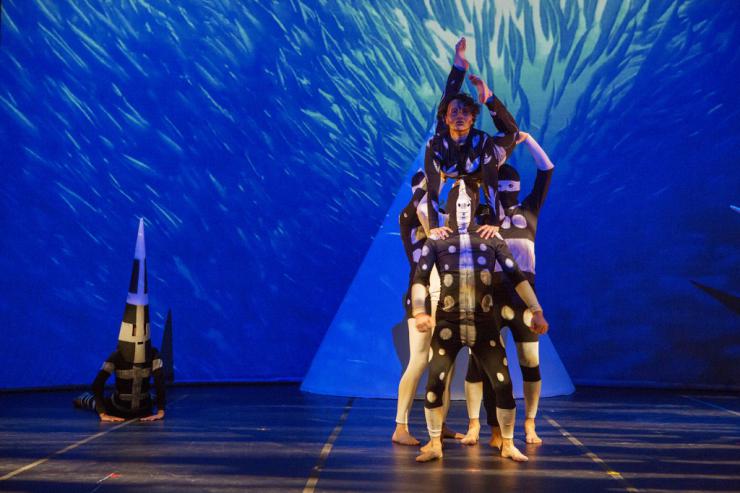
That occasion happened almost a year later after I was invited by Studio 303 to give a dance workshop. Present at that workshop was Leticia Vera, a Mexican dancer that immigrated to Montreal in 2007, and whom I had the opportunity to meet in 2010 when we were both residents at the Indigenous Dance Residency at the Banff Centre for Arts and Creativity in Alberta, Canada. Reunited at that point in Montreal, Leticia shared with me the idea of creating a play that would be created with the support of Ondinnok. I was fascinated with the thought of having the opportunity to be reunited with Yves and Catherine, and to converse with them once again. A few days later we were all together again in Ondinnok’s studio speaking about the many projects they had created as a company. I learned then about the works based on traditional histories of the Mayans and the Inuits, which helped shape the play Ukuamaq. I also learned about the production of Un Mundo Que Llega a su Fin—Lola (A World That Reaches the End—Lola), a theatrical piece inspired by the history of the last person of Selk’man origin—an indigenous tribe that suffered from genocide contributed to the colonizers of Chile and Argentina. At this gathering I learned all about the work the company has been making in the province of Quebec for over thirty years. Personally, I associate the city of Quebec with the 1990 Oka Crisis—a confrontation between the Mohawk tribe and the residents of Quebec over a land dispute.
While being in Ondinnok’s studio, I sensed a fighting spirit reminiscent of Yves and Catherine’s efforts to convince other indigenous artists that it is possible to make theatre based on their voices and aesthetic. Their tremendous efforts within the company has brought awareness and consciousness to other sectors of the Quebec population, especially in regards to the importance of listening, appreciating, and supporting contemporary art generated by the First Nations people of Canada.
I was also told about the Contemporary Native Art Biennial festivals, which were originally organized in 2013 and have functioned as a platform for showing not only Ondinnok’s work, but also other indigenous artists throughout different mediums of visual arts, cabaret, poetry, dance, theatre, and traditional art.
Ondinnok is a culturally specific company for indigenous theatre that both opened its doors to and made indigenous artists proud of their origins. Ondinnok has also established an aesthetic that has brought different sectors of Canadian society closer to their art. / Ondinnok continua siendo la organización de Teatro Indígena que abre las puertas para que los artistas Indígenas se sientan orgullosos de su origen, al igual de ser aquella que estableció una estética capaz de acercar a su arte a los diversos sectores de la sociedad canadiense.
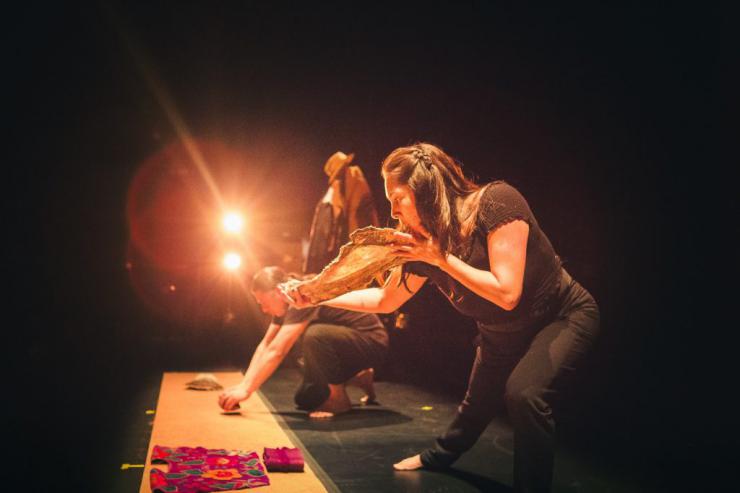
This year was the Third Indigenous Spring, a festival much like the Biennial, and I had the opportunity to participate in a collaborative creation with Leticia Vera on a play based on an original idea by Vera called El Buen Vestir-Tlakentli (Well Dressed—Tlakentli). In this play, we explore identity, immigration, adaptation, and the complexities of immigrating into Canada. The show was a collaboration of a great team of artists from Mexico and Canada. This was the first show ever produced by Ondinnok that fell under the genre of dance theatre.
At the moment, Les Productions Ondinnok is undergoing a transition phase. The artistic direction of the company is now in hands of Dave Jennis. In this way, Yves and Catherine put a close to an era, which started with the founding of Ondinnok. Ondinnok is a culturally specific company for indigenous theatre that both opened its doors to and made indigenous artists proud of their origins. Ondinnok has also established an aesthetic that has brought different sectors of Canadian society closer to their art. Not long ago, Yves Sioui received news that he will be awarded the 2017 Lifetime Artistic Achievement Award as part of the Governor General's Performing Arts Awards, making him the first indigenous artist and theatremaker to receive the honors. So, congratulations to Yves contributions to the arts by helming Ondinnok for over thirty years.
***
La primera vez que me encontré con Yves Sioui Durand y Catherine Juntas, fundadores de Les Productions Ondinnok, fue en la emisión 2015 del Festival Talking Stick organizado por la ejemplar artista Indígena Canadiense Margo Kane, y llevado cabo en la ciudad de Vancouver en el mes de febrero. Ahí tuve oportunidad de platicar con Yves y Catherine, los cuales me sorprendieron cuando se comunicaron conmigo con un español muy claro y con acento latinoamericano. Quede más que encantado cuando ambos me compartieron del trabajo que Ondinnok ha realizado inspirados en los múltiples viajes que han hecho por Canadá y por la América Latina, y de las conexiones y lazos que estrecharon con los Pueblos Indígenas, especialmente en países como Guatemala y México.
Yves me compartió que una de las cosas que más lo había impactado en su vida fue conocer acerca de lo que los historiadores denominan la Conquista de México y de la forma en que los Pueblos Indígenas Mexicanos fueron sometidos por la barbarie Española. Me platico de sus viajes por Oaxaca, sus encuentros con las comunidades mayas en la península de Yucatán, y la enorme sorpresa de parte de los Indígenas Latinoamericanos de saber que ellos son de origen Indígena Canadiense, así como de enterarse de los procesos de colonización perpetrados por los colonizadores franceses e ingleses en lo que ahora se denomina Canadá—conocida por los Pueblos Indígenas de la región como La isla Tortuga. De estos encuentros y de la recolección de las historias e investigaciones que recopilaron en sus viajes a México, Ondinnok creó la producción teatral La Conquista de México.
Yves y Catherine se dieron a la tarea de formar un elenco con actores y colaboradores mayoritariamente de origen Indígenas y Quebequenses para crear el trabajo. El lenguaje del texto fue en francés y la obra presentada en Montreal.
Me cautivo la idea de crear un teatro que hable de los hechos que pasaron en México durante esos duros acontecimientos que marcaron la vida de los Pueblos Indígenas. Y estando más enlazados en la conversación le pregunte a Yves que otras propuestas teatrales habían sido producidas por la compañía. El me contesto, “Necesitaríamos mucho más tiempo para poder compartir contigo los caminos andados por Ondinnok para hacer un teatro que hable de y sobre los Indígenas, y que sea realizado por ellos mismos.” Me pareció muy pertinente su respuesta y ambos acordamos que lo haríamos en otra ocasión, quizá en Montreal.
Esa oportunidad llegó casi un año después cuando fui invitado por el Estudio 303 a dar un taller de Danza, en el estudio llego Leticia Vera, una bailarina mexicana que emigro a Montreal en el 2007, y a la cual tuve oportunidad de conocer en el 2010 cuando ambos asistimos al Programa de Danza Indígena del Centro Banff para las Artes en Alberta, Canadá. Fue entonces que Leticia y yo nos reencontramos y ella me externo la idea de crear una obra que contaría el con el apoyo de Ondinnok. Me fascino la idea de poder encontrarme otra vez con Yves y Catherine y hablar con ellos. A los pocos días ya nos encontrábamos en el estudio de la compañía platicando sobre los otros proyectos que a través de su historia, habían realizado. Me entere entonces de los trabajos basados en las historias tradicionales mayas e Inuit y que sirvieron como plataforma para crear la obra Ukuamaq. También me enteré del montaje de la obra Un Mundo que llega a su fin- Lola, una pieza teatral inspirada en la historia de la última persona de origen Selk’man—grupo Indígena que sufrió el genocidio perpetrado por los colonizadores en Chile y Argentina. En esta reunión pude escuchar del trabajo que la compañía a realizado en la provincia de Quebec por más de treinta años. La región es conocida por los hechos ocurridos en 1990 durante la llamada Crisis de Oka, cual culminó en un enfrentamiento entre Indígenas Mohawk y los residentes quebequenses por disputas de tierras.
En ese espacio del estudio de Ondinnok, pude percibir la lucha resistente de Yves y Catherine de convencer no solo a lo Primeras Naciones artistas Indígenas de los que se es posible hacer arte escénico a partir de su propia voz y estética, sino de los enormes esfuerzos de la compañía de concientizar a otros sectores de la sociedad quebequense sobre la importancia de escuchar, apreciar, y apoyar el arte contemporáneo generado por las Primeras Naciones de Canadá.
Ellos me contaron acerca de las Bienales de Arte Indígena que se han organizado desde el ano 2013, y que han funcionado como plataforma para mostrar el trabajo de la Ondinnok al igual que de otros artistas Indígenas a través de exhibiciones de arte visual, cabaret, poesía, danza, teatro y arte tradicional.
Este año fue la Tercera Primavera Indígena, parecida a la Bienal, y en la cual tuve la oportunidad de participar con la creación en colaboración con la idea original de Leticia Vera llamada El Buen Vestir-Tlakentli. En esta obra, exploramos temas de identidad, la migración, la adaptación, y las complejidades que afrontamos al migrar a Canadá. La producción de la obra contó con la colaboración de un equipo artístico compuesto de Mexicanos y Canadienses. Esta obra, fue la primera obra producida por Ondinnok dentro del genero de la danza-teatro.
La compañía esta en una etapa de gran transición. La dirección artística de la compañía estará en manos de Dave Jennis. De esta forma, Yves y Catherine cerraran una etapa que comenzó al fundar Ondinnok. Ondinnok continua siendo la organización de Teatro Indígena que abre las puertas para que los artistas Indígenas se sientan orgullosos de su origen, al igual de ser aquella que estableció una estética capaz de acercar a su arte a los diversos sectores de la sociedad canadiense. Hace pocos días, Yves Sioui recibió el anuncio de que recibirá el Premio del Gobernador General de Canadá en Artes Escénicas, Trayectoria de Vida en el Arte Teatral, siendo el primer artista Indígena que realiza arte teatral al que se le otorga este reconocido premio. Así que muchas felicidades a Yves por su labor al frente de Ondinnok por más de treinta años.

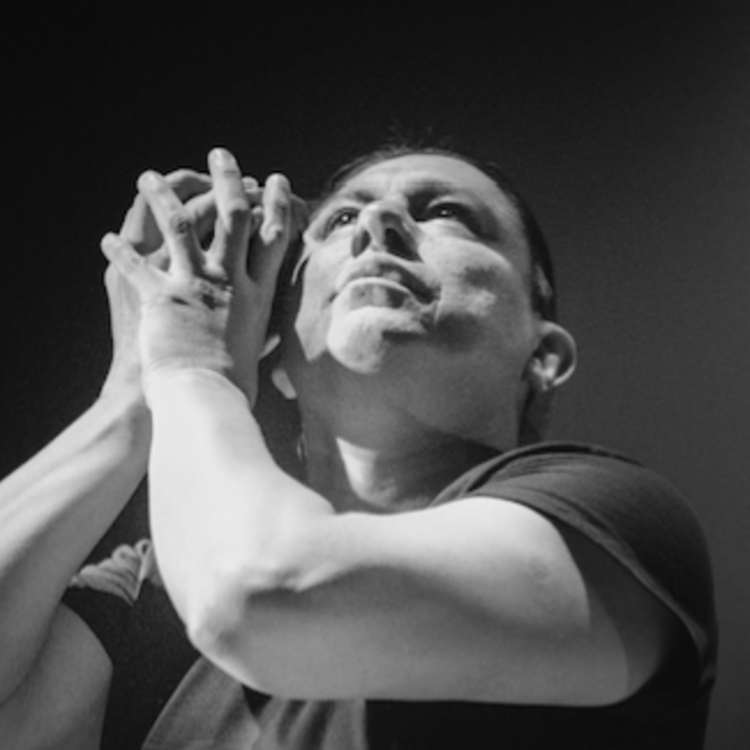
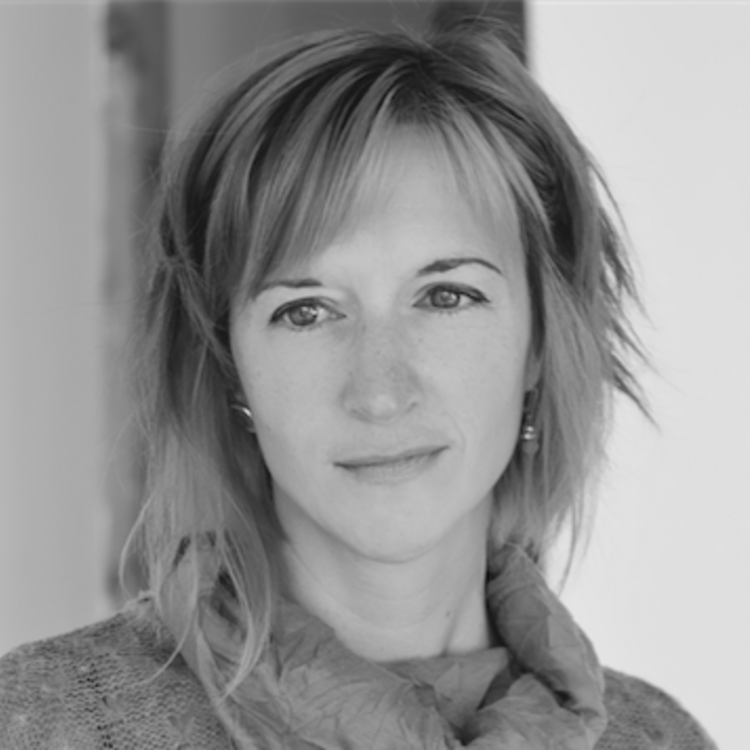
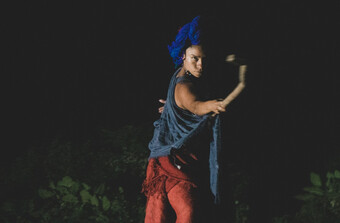

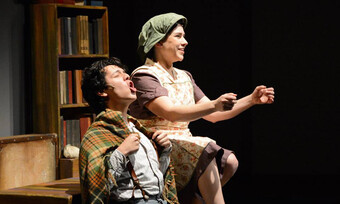



Comments
The article is just the start of the conversation—we want to know what you think about this subject, too! HowlRound is a space for knowledge-sharing, and we welcome spirited, thoughtful, and on-topic dialogue. Find our full comments policy here
Thanks - I enjoyed hearing about allies in action